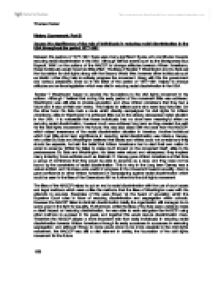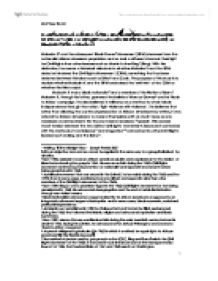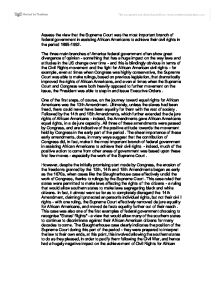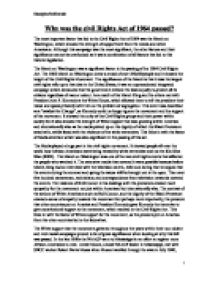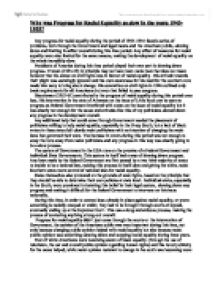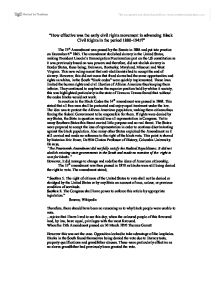The Civil Rights Movement
The Civil Rights Movement
In 1863, the American president Abraham Lincoln made the Emancipation Proclamation and freed all slaves in America. The majority of those who gained their liberty were the descendants of men and women brought from Africa against their will during the previous two centuries and sold to work without wages or rights. Yet, in the years following emancipation the rights of African-Americans were increasingly eroded, rather than consolidated, particularly in the southern states which had attempted to break away from federal control during the civil war.
A series of laws (known as ‘Jim Crow’) systematically created a segregated and tragically unequal society, where African Americans were denied access to public facilities, the vote and areas of employment as well as being segregated in schools. They also received little protection from the law, with 2,500 lynchings recorded between 1886 and 1900.
It was not until the 1950s and 60s that this status quo was effectively challenged, with a vast civil rights movement led by charismatic, but divisive figures including Martin Luther King (who advocated non-violent direct action) and Malcolm X (who urged a growth in black unity and pride alongside a right to self-defence and self-determination). The opposition to the civil rights movement was fierce and progress was difficult, with both citizens and politicians often obstructing legal decisions and federal legislation. However, by the late 1960s, the system of segregation had largely been dismantled and African Americans had legal endorsement of their right to equality, even if everyday realities demonstrated that divisions remained.
Learn more about the Civil Rights Movement...
- CHRONOLOGY - Take a look at our timeline of events for the Civil Rights Movement.
- KEY INDIVIDUALS - Malcolm X, Martin Luther King, Kennedy - find out about the key figures in the Civil Rights Movement
- KEY DEBATES - How did the civil rights movement start? How successful were its campaigns? Look at an in-depth analysis of some of the key debates surrounding the movement.
Essays on the Civil Rights Movement
The Civil Rights movement in the USA was a time of both great change and great people - learn more about the period with these essays.
Assess the significance of the role of individuals in reducing racial discrimination in the USA throughout the period 1877-1981.
History Coursework: Part B Assess the significance of the role of individuals in reducing racial discrimination in the USA throughout the period 1877-1981...
To what extent were Malcolm X and the subsequent Black Power Movement the 'Evil Twin' of the Civil Rights Movement in the late twentieth century in the United States of America?
To what extent were Malcolm X and the subsequent Black Power Movement the 'Evil Twin'1 of the Civil Rights Movement in the late twentieth century...
Assess the view that the Supreme Court was the most important branch of federal government in assisting African Americans to achieve their civil rights in the period 1865-1992.
Assess the view that the Supreme Court was the most important branch of federal government in assisting African Americans to achieve their civil rights...
Why was the civil Rights Act of 1964 passed?
Why was the civil Rights Act of 1964 passed? The most important factor that led to the Civil Rights Act of 1964 was the March on Washington, which...
Why was Progress for Racial Equality so slow in the years 1945-1955?
Why was Progress for Racial Equality so slow in the years 1945-1955? Any progress for racial equality during the period of 1945-1955 faced...
How effective was the early civil rights movement in advancing Black Civil Rights in the period 1880-1945?
'How effective was the early civil rights movement in advancing Black Civil Rights in the period 1880-1945?' The 13th Amendment was passed


